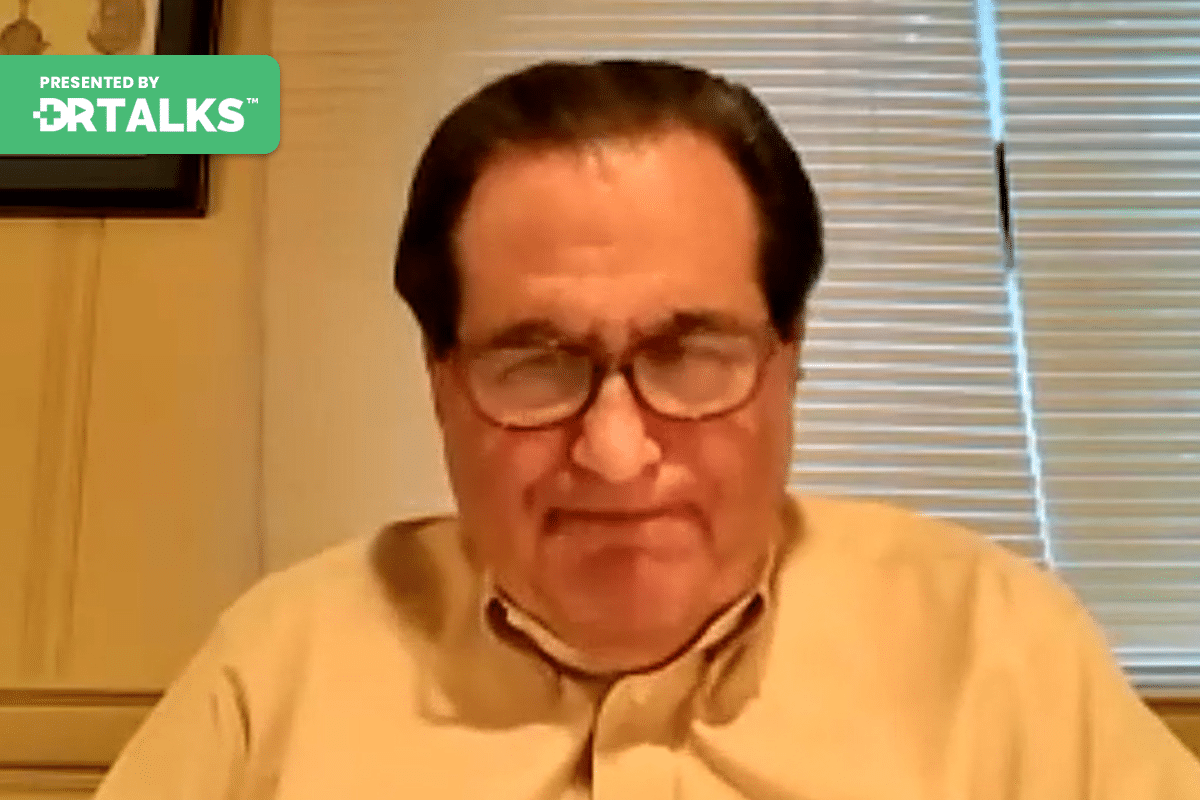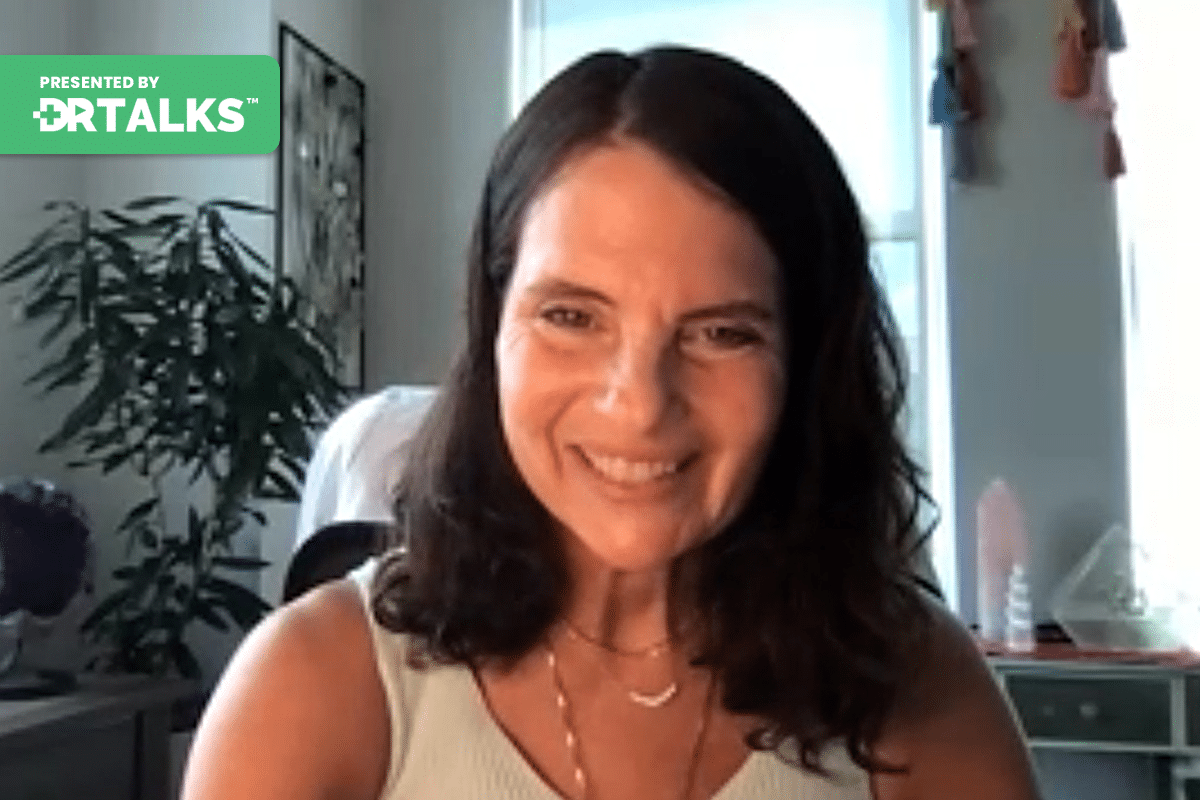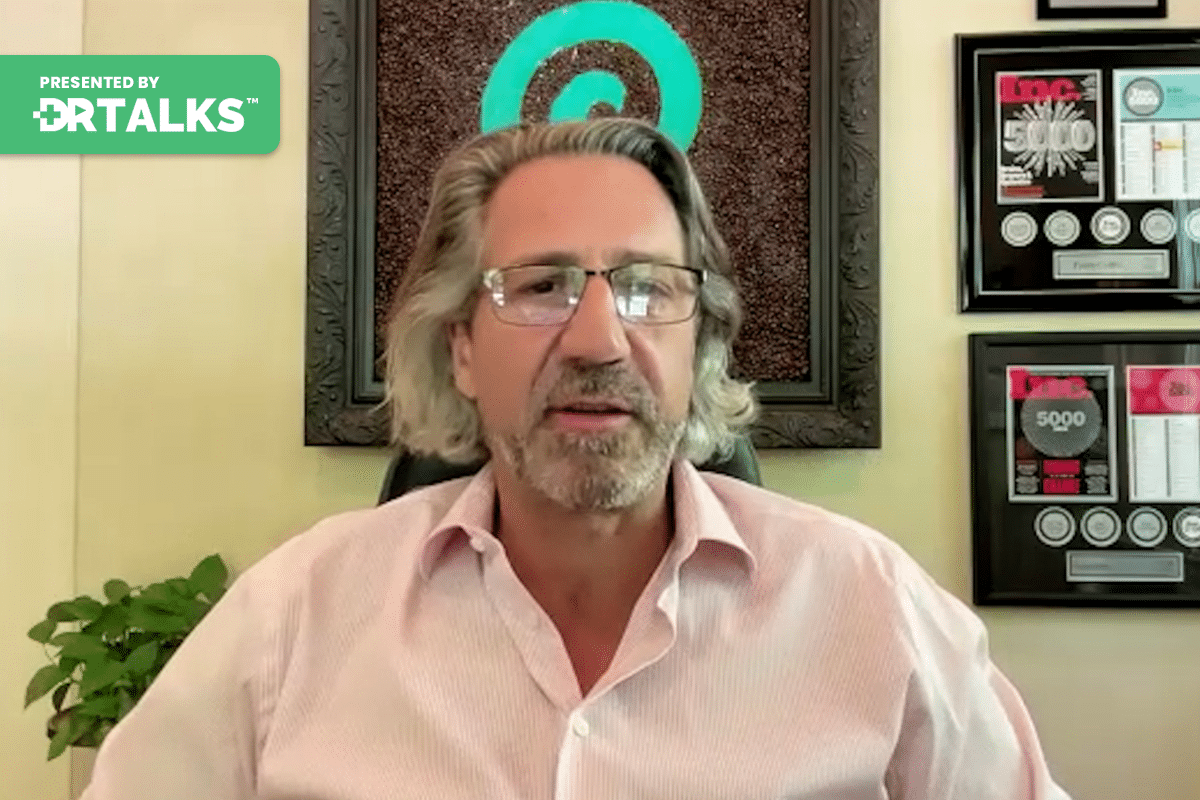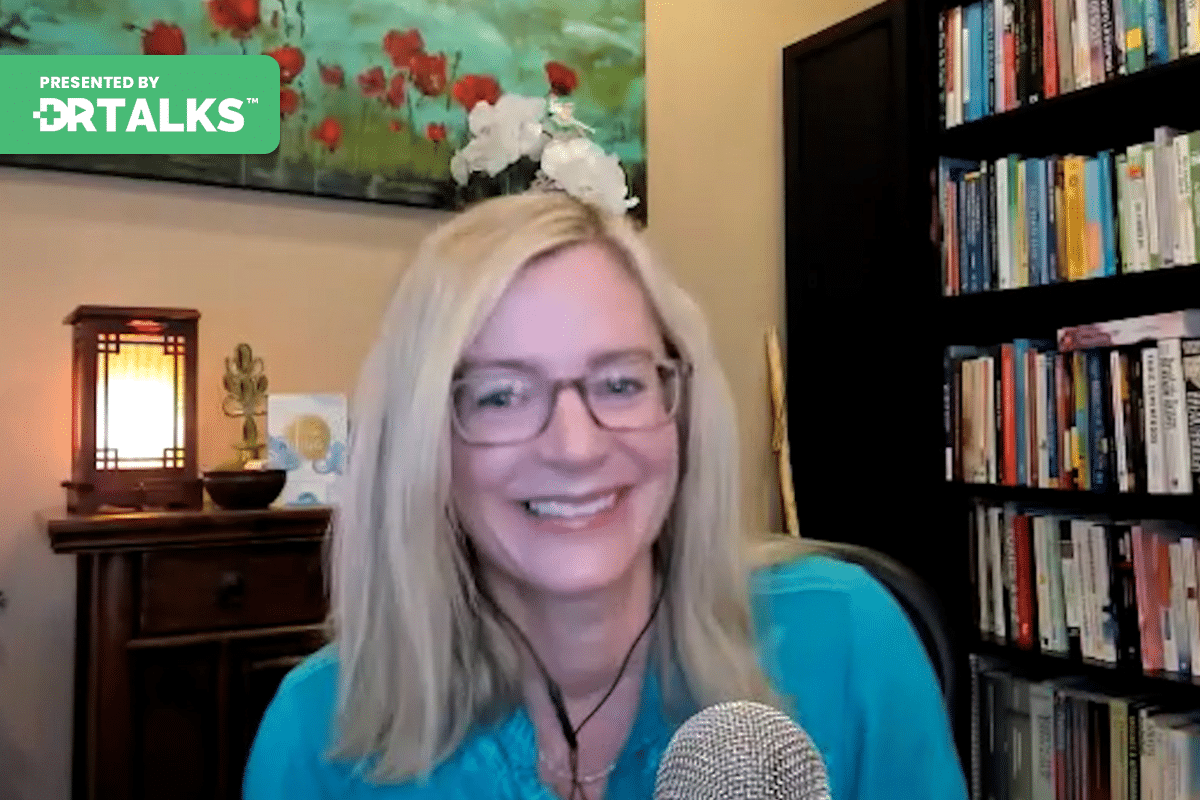Join the discussion below

Dr. Ann Shippy is Board Certified in Internal Medicine and Certified in Functional Medicine. She operates a successful private practice in Austin, TX where she is known for her compassionate, attentive, and tireless approach to caring for her patients. She has gained a considerable reputation for successfully diagnosing and treating... Read More

Josh Kardisch is an attorney at the Long Island (New York) based Pegalis Law Group, LLC. He represents individuals and families in personal injury and wrongful death matters involving exposure to toxic substances such as mold, lead, and various pesticides, and claims of medical malpractice. Josh has been representing individuals... Read More
- Gain a comprehensive overview of toxic mold litigation, understanding the legal landscape and challenges faced by affected individuals
- Grasp the essential elements of proof required in mold exposure cases and the importance of surviving motions to dismiss
- Learn about the pivotal role of expert testimonies in mold litigation and how they can make or break a case
- This video is part of the Mold, Mycotoxin, and Chronic Illness Summit
Related Topics
Ambient Environment, Black Mold, Dose-response Relationship, Expert Testimony, General Causation, Immune System, Industrial Hygienist, Inflammatory Process, Landlord Obligation, Mold Exposure, Mycotoxin Litigation, Premises Liability, Scientific Literature, Settlement, Specific Causation, Summary Judgment, Symptoms, Toxic Tort, Water DamageAnn Shippy, MD
Welcome to the Mold, Mycotoxins, and Chronic Illness Summit. I am your host, Dr. Ann Shippy. Next, we get to speak with Josh Kardisch. He is an attorney with Pegasus Law Group. He represents those involved in personal injuries from exposure to toxic substances such as mold, blood, pesticides, and asbestos. Thank you so much for joining us today.
Josh Kardisch
Thank you for having me. I appreciate it.
Ann Shippy, MD
How did you get started with mold litigation?
Josh Kardisch
Well, originally, when I was in college, I was a pre-med major for about three and a half years until I went to work in an emergency room and saw what the practice of medicine was really like. I knew I did not have the stomach for it, so my second favorite subject was the law. However I do have a background in the biological sciences, and we have always been interested in the effects of various environmental toxins on the human body. When I graduated from law school, I went to a law firm that was involved in the Agent Orange litigation a long time ago.
Ann Shippy, MD
Wow! That was a big deal.
Josh Kardisch
That was a very big deal. I got to meet some very talented doctors and attorneys. I learned an awful lot about toxic torts, which is the area of law that deals with exposure to toxic substances. I have been representing both plaintiffs and defendants in toxic tort cases involving mold, asbestos, and pesticide exposure for the last 37 years.
Ann Shippy, MD
Okay. You have quite a bit of experience in this area. That is amazing, too. then the fact that you represent both sides.
Josh Kardisch
Yes. Now, I have worked exclusively on the plaintiffs’ side for the past several years. But I have a lot of experience on the other side, which, of course, helps in learning all the different perspectives, all the different theories, and the different medical and scientific specialties as well.
Ann Shippy, MD
If you could give me a little bit of an overview, please give our audience a little bit of an overview of what is happening with mold and mycotoxin litigation.
Josh Kardisch
Okay. As an overview, I can say that at least in the state of New York, we have had some decisions by high courts that make it very difficult for people exposed to mold to make it to a jury. We have a process in New York that is called summary judgment, and that is essentially when, in mold cases, defendants ask the court to dismiss cases because the plaintiff cannot meet their burden of proof. Unlike other areas of toxic torts, mold exposure can create an amalgam of different symptoms that people can get from colds and cases of flu, allergies, and asthma. There is no signature injury to mold as there is to other substances. It is very difficult for a plaintiff to prove their case, and it is just as difficult for the plaintiff to get past that summary judgment stage and make it to a jury. At least in the state of New York, there are not many plaintiffs attorneys who take on mold cases because they are difficult to prove.
Ann Shippy, MD
That is probably true for a lot of other states, too. I know that that has been the way it has been in Texas, too.
Josh Kardisch
Yes, Texas, I think, is the jurisdiction where the first couple of mold cases were litigated many years ago and sometime in the mid-eighties. But in environments where there is a lot of rain and there’s a lot of water damage, Maryland is another location where you see a lot of mold cases. In New York, of course, we see a lot of people who are exposed to water infiltration and mold. But the courts have not been too kind to the plaintiffs in those cases.
Ann Shippy, MD
Yes. Okay. It is a tough landscape to even think about having to file a lawsuit.
Josh Kardisch
Yes.
Ann Shippy, MD
What are the situations that you think it is worthwhile considering?
Josh Kardisch
Well, let me just start by saying that in the area of mold litigation, the laws are identical to the laws in general premises liability cases. A landlord has a legal obligation to maintain his residential premises in a reasonable and safe condition. That is true, whether we are talking about a stair railing, a front stoop, or water conditions that can cause mold to flourish. The plaintiffs are generally speaking, and the tenant in these cases has to prove that the owner created some defective condition that allowed for water damage to exist and remain, or that he did not create it but knew about it for a sufficient amount of time during which he should have remediated the situation. The tenant has to prove that he was exposed to mold spores for a sufficient amount of time to have caused harm and that that exposure caused the harm that the plaintiff is alleging. The most difficult aspect of these cases is proving that there was an exposure that was long enough to create the symptoms that the plaintiff is complaining about, and that is usually the area that landlords attack when they make applications to the court to dismiss cases.
Most of the cases that we have seen in the area of mold articulate the standards that a plaintiff has to prove. The elements of proof come in the context of the defendant asking the court to dismiss the case early on. We have some very seminal cases in New York. There is one case that came out in 2006 called Parker against Mobil Oil Corporation, and that went up to the Court of Appeals, which is the highest court in New York State. What that court said was that for the tenant to prove all the elements of mold exposure sufficient to make it to a jury and prove his case, he must employ a methodology. In New York, we still use the Frye standard as opposed to the Daubert standard for deciding expert admissibility. The Frye Standard says that the theory has to be generally accepted in the scientific community. Most states have adopted a more flexible Daubert standard. But in New York, this Parker case said that there has to be a sound methodology for the plaintiff to prove that there’s a relationship between the disease and the specific factor suspected of causing the disease. That is always the subject area of experts. Here’s where we get into the idea of general causation versus specific causation. The Parker case said that the plaintiff has to provide evidence in the form of scientific literature that the toxin in this case, mold, is capable of producing the particular illness.
That is general causation because that applies to all people, and the level of exposure to the toxin that will produce the illness is sufficient. That is the idea of the Dose-Response Relationship. The first thing that a plaintiff has to prove is that this mold condition existed, and the next thing they have to prove is that there is enough scientific literature to show that mold can cause the symptoms that the plaintiff is alleging. That is usually the subject of this Dose-Response Relationship trip proof. The next thing that the plaintiff has to prove is what we call specific causation. That means that the plaintiff has to show that the probable entity that caused this particular plaintiff’s illness exists. This analysis, by necessity, involves weighing the possibility that mold caused the illness as a whole as opposed to other things that may have caused the illness. From a medical perspective, it is a matter of making a differential diagnosis that it is mold as opposed to some other factors. Expert opinions on causation in this area have to set forth the amount of exposure to the source of the toxin, whether it is capable of causing the illness, and whether it caused the illness in this particular circumstance. The Parker case essentially denied summary judgment to the landlord because the plaintiff, through the use of expert testimony and scientific literature, was able to show that there was at least a credible amount of evidence to show both general and specific causation. Ultimately, the jury has to decide as to which side’s experts are the most credible.
Just less than ten years ago, there was a very famous case called Cornell. Cornell versus 360 West 51st Street. That went a little bit further than the Carvey case in terms of defining what the elements of proof are. That said, the plaintiff must be able to show not just that there was mold in the apartment or the residential dwelling, but that those levels were greater than what would be expected and greater than the ambient environment outside the premises. There is a very specific requirement. You cannot just point to black mold growing on the inside of a shower. You have to have an industrial hygienist who goes in and does scrape samples, swipe samples, and also air sampling. That has to be an affidavit from that specialist stating that the amount of mold spores in the apartment or residence is greater than that which you would find in the general environment. The Cornell case took that whole standard that Parker articulated a little bit further. It reiterated the fact that the point to pass is to prove both general and specific causation and that the plaintiff has to be able to show not just the exposure—that the exposure inside the dwelling caused the symptoms—but that after the point of leaving the premises, those symptoms continued. That is another element in the causation.
Ann Shippy, MD
Once somebody is left out, they do not just get better on their own.
Josh Kardisch
Correct. You have to show that those symptoms persist. Now, in some of the cases that I have at present, I have a 6-point mold case. It is an entire family. I have a doctor who was able to establish that the mold caused an inflammatory process that affected the immune system. That is why, several years after my clients vacated, they still have some of the same symptoms. Those are the two very important cases in the state of New York. There have been several cases from lower courts in New York recently. There have been three specific cases in the last couple of years in which plaintiffs have been able to show enough to get past that summary dismissal stage and go to a jury. As a practical matter, I would say that 99-plus percent of these cases settle because the science is not established enough to be able to say that anybody wants to take a chance in letting a jury make the decision. There are very few mold cases that go through a full trial. Most of them are settled because of the scientific and medical uncertainties involved.
Ann Shippy, MD
There is uncertainty on both sides.
Josh Kardisch
That is correct.
Ann Shippy, MD
The first thing is just to get it to go through and ensure that it is not dismissed. Most cases are being settled. What kinds of things are being settled for? Is it things like medical expenses and replacing belongings? What kinds of things are people able to get some repair relief for?
Josh Kardisch
Yes, well, the plaintiffs in New York can get compensation for that. What’s called past pain and suffering and future pain and suffering? That relates to the symptoms that the plaintiffs have had. What effect have those symptoms had on them? Several studies are coming out that show that there are neurological sequelae of mold exposure. It is not just the upper respiratory conditions that, courts can say, oh, it is just a cold or the flu or now COVID. There are cognitive issues involved. I have cases where young people have trouble, have memory problems, or have trouble concentrating. Their grades start to go down in school. You can be compensated for that under the category of past pain and suffering. Also, if you have a track record of having the symptoms, pain, and suffering can continue. Those are two elements of proof. If you are unable to work, then you can also get compensation for lost earnings. Little by little, it is coming out that there are psychological components to all of this. Depression, anxiety, fear, and other things that are coming out are compensable as well. Property damage—yes, that is compensable. Anything that you have destroyed because of mold exposure. But the real thing is, as we say, that the big ticket items are the physical, psychological, and emotional injuries that people suffer as a result of their exposure.
Ann Shippy, MD
Do you see things changing at all with some of these cases that are being established? Do you see that builders and landlords are starting to become more careful about how they are maintaining or building buildings?
Josh Kardisch
Well, I can tell you that in my years of representing landlords, the answer was definitely no; it is all a matter of cost, at least for the landlords that I have represented. But I do see a lot of green buildings now and precautions that are taken to make sure that there is no water infiltration, and there are a lot of environmental companies that are cropping up that help landlords. I see a growing trend in this area as well, helping landlords make the appropriate decisions when there is water infiltration. In the particular case where I represent the six members of the family, they complained to the landlord many times about the fact that water was just flooding in from above, and the landlord would come in, cut out a little piece of sheetrock, patch it or paint over it, or maybe throw some bleach on it, but it would keep happening. That is what we consider a bad landlord.
The good landlords are the ones who come in, listen to what the industrial hygienist or the industrial scientist says, and follow those recommendations for remediation and abatement. I think landlords are becoming more and more conscious in some regards, but there is a number, particularly in New York City, of landlord groups that have advocated, unfortunately to their base, that mold has become the new way for tenants not to pay their rent. That mold is just a big hoax started by plaintiff-oriented organizations that mold exposure is not as harmful as the plaintiffs claim that symptoms preexisted when they are moving into the buildings, and therefore, some landlords are very cynical about the complaints related to mold. That is very unfortunate because we see a lot of young children who are most susceptible to developing asthma for no apparent reason other than the fact that there was tremendous water infiltration into their residences and the buildup of mold that landlords do not remediate.
Ann Shippy, MD
It is so interesting talking to you because you are getting, by taking these cases, to keep up with what is going on in this landscape. You do. You’re so aware of a lot of these things that we are seeing in the medical field: the massive effect on children, their ability to learn asthma, how well their immune systems are working, the neurological changes that are happening, and then in adults as well. You are getting a big picture of what is happening in such a big way and how, and then how there are these names that are happening in society where there’s such conflicting information that confuses people.
Josh Kardisch
Correct. Absolutely. On the one hand, you have the idea that this whole mold thing is just a big scam. On the other extreme, you have the people who care about their buildings, their liability, and their ability to get insurance. People who own properties are simply good people who do not want to see people get hurt. You have the two extremes, and I think both sides are growing. Both extremes are growing, too, to a large extent.
Ann Shippy, MD
Yes. We have had such an epidemic because of the way we were building the buildings and the way that water intrusion or leaks are not being handled properly. It is such a growing problem, day by day, week by week, and year by year.
Josh Kardisch
Yes.
Ann Shippy, MD
I think it is just going to come to an end. But the exciting thing is that we are getting more and more of the scientific data that we need to back up the health issues. I can see how the landscape is going to continue to improve. I am not a litigious person. I am not necessarily encouraging people to do anything more than try to make themselves and their families better. But I think it is, unfortunately, one of the ways that we can help make changes and increase people’s understanding of what they need to do to keep their own homes safer. Then also how to build better buildings.
Josh Kardisch
The more the science community and the medical community study the problem and develop articles, the more the courts will be willing to accept this as not just some flaky problem that few people have but more of a real condition. This is no different than asbestosis. We know that asbestos causes asbestos as well. We do know that mold causes a variety of symptoms. Even if there is no signature injury, there are a variety of respiratory, internal, and immunological intellectual problems. I deal with one expert who has used NeuroQuant technology with MRIs to show deficiencies in the brain and the shrinking of the brain after the effects, the long-term effects of exposure to mold in so far as it compromises the immune system. It is very fascinating stuff. The more that doctors and scientists develop it, the more the courts are going to be willing to accept it.
Ann Shippy, MD
Well, so for our listeners, the NeuroQuant is a very detailed MRI that shows the volumes, not just whether there is a stroke or a lesion, but also the volumes of the different parts of the brain. We see a very certain pattern for mold exposure. When we see these patterns, we can be pretty sure that mold has been the cause and, of course, follow up with further investigation. But one of the exciting things that I see in my practice is that one of my first patients with a NeuroQuant was a biology professor at U.T. with highly acclaimed research, and she and her forties were noticing that her memory was losing her memory, and it turned out that her air conditioning system had been installed to draw in the air from a moldy crawl space. So she had a huge, long-term exposure to mold. But what was exciting is that when we removed her from the situation, we helped her body detoxify and gave her a bunch of supplements that helped with neurological healing. We saw her NeuroQuant get better.
Josh Kardisch
Wow. Yes, that is exciting.
Ann Shippy, MD
Yes. That is the other exciting thing. Those of us who are practicing functional medicine, and the thing that we were doing is that when we do the right things to help the body heal, we can see all of these problems improve: cognitive decline, anxiety, ADHD, autoimmunity, and endocrine disruption. One of the points of this summit is to bring on the experts who are seeing improvements in their patients to help share what is working.
Josh Kardisch
It’s not the exposure to mold and the issues that it creates are not necessarily irreversible, but there are therapies, and there are some very good therapies, supplements, diet, and all sorts of things holistically that can improve. I just learned about the NeuroQuant technology within the last several months, and I am very glad to hear that somebody has shown improvement. I understood what NeuroQuant MRIs were in the context of Alzheimer’s disease because I think that is where they were used the most.
Ann Shippy, MD
Using AI.
Josh Kardisch
It is great to see that the scientific and medical communities are using it. It takes a certain amount of gumption to apply a technology in an area where it is not usually used. We were all seeing good results.
Ann Shippy, MD
To know where we are and then track our progress. I think it is an important test to consider for people who are having cognitive issues. Yes.
Josh Kardisch
Right. Yes. There’s also the vision.
Ann Shippy, MD
I realized that you were starting to be able to use it from a legal standpoint. That is good to know.
Josh Kardisch
Yes. Well, we were using it in this one case that I am working on. I will have to get back to you as to whether the court accepts that or not because we were not at that stage, but we use that in visual contrast testing to determine the effects of mold. That seems to be fairly new and upcoming. Also, in genetic testing, certain genetic markers show a susceptibility to the effects of mold.
Ann Shippy, MD
As a subtype. Yes.
Josh Kardisch
Yes. That is fascinating. That is very interesting. All of this science is going to ultimately defeat a lot of the claims that the insurance companies are making that there are no markers, no ways of determining whether you are susceptible or allergic, or anything like that. I am very glad that science is developing in such a way that not only can we help people, but maybe we can get landlords to take responsibility and be more responsible generally.
Ann Shippy, MD
The other kinds of things, for the people that are listening, are thinking that they want to go down a legal path. There are situations where the VCs, the NeuroQuant, and the HLA genetic typing are helpful. You mentioned getting a good inspector to come in and do the right testing on the environment. Are there any other tools that help you make a good case?
Josh Kardisch
Yes. Well, I started to mention before that some of the experts that we deal with are looking at the effects of mold from the perspective of a chronic inflammatory syndrome. That can explain an awful lot. I know that there are at least 35 articles that I have seen on that topic. The whole process by which mold affects the body. I have an expert who refers to it as a cytokine storm, cytokines being a certain protein, and that is what it does. It creates so much of it that it hurts the immune system. I know that there’s VEGF; they test for that; they test for MMP-9; those are other tests that are used. I will not pronounce this correctly, so I will give you the acronym TGFB1. Yes. In the case that I am working on now, all my clients them had abnormal levels, either too high or too low, which show or also show the effect of mold on the body.
Ann Shippy, MD
Sometimes the body just gets too worn out to do the things that it needs to. Yes.
Josh Kardisch
Too overwhelming, I think. I mentioned before the visual contrast sensitivity test that was also used to determine the effects of mold. In my case, all six of my clients failed that test, and they obviously should have been able to surpass that. Those are some of the basic biological factors or tests that we have been looking at, and they are very helpful in convincing courts that this is a real phenomenon. There is a long-term effect; just as we have long COVID, there’s long mold exposure, and if we are trying to apply the science to the standards that landlords are supposed to follow, we need to compensate these people. They need to be compensated. That is why landlords have insurance to compensate people for their injuries. The more science develops, the less likely it will be that the insurance companies can just take what we call a no-pay position and refuse to compensate people who put all their money and effort into trying to get the cases dismissed.
Ann Shippy, MD
Put a lot of money into having safer buildings.
Josh Kardisch
Correct? Yes. That would be if landlord premiums could be used for those purposes and to compensate the people who need medical care. Some of this medical care, and I am sure, specifically, the holistic solutions and treatments, are not covered by a lot of insurance.
Ann Shippy, MD
The things that work do not get covered, unfortunately.
Josh Kardisch
That point is exactly
Ann Shippy, MD
What we need is not covered.
Josh Kardisch
I see that with my clients, whom my experts send for all these types of tests, they have to pay out of pocket for them. Well, if these symptoms and these necessary treatments are the result of exposure to mold on someone’s premises, then we know who should be held responsible and who should be paying for it. It is not the people who are being injured.
Ann Shippy, MD
Is there anything else that you think people should consider when they are trying to decide? Do I just focus on getting better, or do I want to get involved in legal cases? Because it takes time, energy, and money to do that as well. Are there any other things that people should be thinking about?
Josh Kardisch
Yes, well, one thing is early blood testing, because blood tests are irrefutable. If there are certain findings at the microbiological level that we can show, yes, there was an exposure of more than what would be considered a normal or ambient amount of mold spores. That would be very helpful. I do not take a lot of mold cases. The reason is because they are hard to develop. But when I have clients that come to me and they already have a lot of the scientific testing done—blood samples, MRI’s, industrial hygienist type testing—then they are further along, also taking pictures. A picture is worth, very huge and keeping diaries. Every time a person complains to a landlord, keep a diary or send an email so that there’s a paper trail and whatnot.
Ann Shippy, MD
But any communication with a landlord is a must.
Josh Kardisch
Absolutely. Because when you get into court, saying that, well, I called them on the phone, the landlord is going to say, Nobody called me on the phone, and then you cannot prove what you need to prove. But again, in the cases that I have, the cases that I consider to be good cases, there is a stream of communication, mostly from the tenant complaining about a situation, complaining that kids are getting sick, and the landlord in all circumstances either will not respond at all, which helps the case, or they will respond in writing, and that could help the case. I have a situation. Yes, go ahead.
Ann Shippy, MD
I was just going to say, that even if you do have a conversation, always document it. Say this is what we discussed today. Yes. What? How do I understand our conversation and send it to them so that there’s no miscommunication about what you think you heard?
Josh Kardisch
Absolutely. In one case, I was able to get the email communications between the landlord and the property manager. They are talking about how the only way to resolve the mold problem is to rip out the bathroom and start again. The landlord very specifically said I am not doing that. That is too expensive. Let these people leave. The piece of paper that is very powerful, combined with photographs of the condition, is very powerful. Take notes, write emails, keep your emails, and keep a diary of the symptoms that you are feeling so that the attorneys do not have to rely on the medical records. I have. I tell people that all the time. Keep a diary. As long as you are still in that environment, keep a diary and write down everything that all of your kids are experiencing and feeling daily because that is fantastic proof. Those are all things, I think, that are grassroots ways to develop your case and, of course, do whatever you can to get better.
Ann Shippy, MD
Yes, that is number one.
Josh Kardisch
That is number one.
Ann Shippy, MD
Get out of this situation and get better. Any other cases that you would like to share that might be helpful for people to understand how they work or what is involved?
Josh Kardisch
I have seen some cases in the city of New York where particular apartments, co-op apartments, or condominium apartments have had mold damage. Those are a little more difficult because what the co-op or condo is responsible for, as opposed to the tenants, is always a very hot topic. Mold on the inside of an apartment is arguably the responsibility of the tenant because it is inside. But if the water damage is coming from the outside, it is seeping in from the roof, or there’s a leaky pipe, then that is the co-op’s responsibility. I do see cases like that. They’re a little more difficult to prove because this is not the typical type of leasehold situation. But, again, notes and photographs are the best way to go forward. Absolutely. There has not been a definitive Supreme Court of the United States decision on these issues, essentially ever. There are Supreme Court decisions that talk about the standard that an expert has to follow for his or her testimony to be admissible. But there are no cases we have in New York—the Parker case or the Cornell case—that apply everywhere in the country about mold. There is no universal standard as a result. Every case is different based on the jurisdiction that you are living in. Unfortunately, in some states, there are a lot of restrictions on what cases go forward and what cases get dismissed. In New York, I am seeing that things are getting a little bit easier, and hopefully, in the case that I have pending, the science that we presented to the court will bear out what we were saying. But they are difficult cases overall. They’re difficult. I know plenty of toxic tort attorneys, plenty of big firms that handle class action water contamination cases, or thousands of asbestos cases that do not take mold cases. I am hoping that that changes.
Ann Shippy, MD
Yes, I am hoping.
Josh Kardisch
That changes.
Ann Shippy, MD
We needed to get to where it is just as clear as, oh, Agent Orange, asbestos, or lab smoking. It is probably closest to smoking anything because it is airborne contamination. It does need to get to that point where it is just very clear, there is a national way of looking at these situations, and people are informed right away on what it takes to stay healthy while living indoors.
Josh Kardisch
In the context of smoking, think about how long the tobacco industry has denied that. In my lifetime, I have been 65 years old. I remember seeing all the commercials when I was a kid about how smoking is good for you; it calms your nerves and all of that. They were denying any harm until relatively recently. We need to get to that point with the situation that we have with exposure and buildings.
Ann Shippy, MD
Yes. There are a lot of people with a lot of money in real estate who do not want this to come through.
Josh Kardisch
Correct. Absolutely.
Ann Shippy, MD
The hit on the insurance companies here as well. There are a lot of forces that do not want to happen.
Josh Kardisch
Absolutely. There is a lot of lobbying there, and a lot of law firms do nothing but lobby. But the science is ultimately what is going to win the day. That is what it is. It is the science and the medicine and everything that you are doing and the people you are doing to investigate it, to care about it. That is the first thing. You see a lot of patients that have inexplicable symptoms. You are doing everything you can to find out what causes these symptoms. In a lot of cases, I am sure you see mold as a factor.
Ann Shippy, MD
Way too often.
Josh Kardisch
Way too often. Yes.
Ann Shippy, MD
Yes, maybe too often. But the good news is that we were figuring out the solutions, too.
Josh Kardisch
Yes.
Ann Shippy, MD
We were, and
Josh Kardisch
I read all the articles that came out. There are a lot of articles by Dr. Schumacher on mold exposure. I think I have read every single one. Yes, there is a lot of good stuff that is coming out to make the case that this is something that needs to be looked into. I am just going to add that in New York in 2016, after a very large study that was done by the Department of Health and the Mount Sinai Occupational Hazard, forget what it was called the Hazard Group. In 2016, there was legislation passed in the city of New York stating that landlords must go in and inspect for mold and remediate those conditions. That is the result of studies. That is a result of scientific evidence. It has got to be.
Ann Shippy, MD
Made about that. Yes. Without looking at environmental toxicity, they have moved the needle forward on several things.
Josh Kardisch
They have a great team. They are a very good team.
Ann Shippy, MD
Yes. Well, it is so great to hear from your perspective how things are moving forward.
Josh Kardisch
Yes.
Ann Shippy, MD
I have learned about mold for my own body and working with patients for at least 14 years. Well, back at the beginning, it just seemed not even worth it to consider putting any time or effort into anything legal, and so it is just so good to hear that there’s headway being made and that it will change the landscape.
Josh Kardisch
It is certainly worthwhile. Health is the most important thing, but a large part of it is holding the responsible parties libel and making them pay. That is what it is all about, from my perspective.
Ann Shippy, MD
Well, and I so appreciate it. With your background in all of these different areas of toxicity, you could also be passing up mold cases. Thank you so much for making these changes happen.
Josh Kardisch
Thank you. Yes.
Ann Shippy, MD
Yes.
Josh Kardisch
Of course.
Ann Shippy, MD
Great. My pleasure. Taking your knowledge and your expertise, knowing how the law works, and reading the scientific studies, a lot of doctors would have trouble reading Richie Shoemaker’s studies because they are very complex.
Josh Kardisch
Yes. However, I have experts who help me with the parts I do not understand. It is, but yes, it is wonderful that these studies are coming out and that attorneys are seeing them and the courts are saying them. All of this stuff gets presented to the court, so the judges have to read it. Yes, it is getting closer to where it needs to be.
Ann Shippy, MD
Yes, that is so great. Well, because ultimately the goal is prevention—keeping people from getting right in the first place.
Josh Kardisch
Absolutely.
Ann Shippy, MD
Well, I appreciate your time. Thank you for your expertise and your warmth and care.
Josh Kardisch
Thank you.
Ann Shippy, MD
For that, you are helping.
Josh Kardisch
Thank you so much to you as well. This was a very nice experience. Thank you.
Downloads










